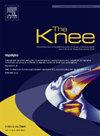盘状半月板的外科治疗
IF 2
4区 医学
Q3 ORTHOPEDICS
引用次数: 0
摘要
背景盘状半月板是最常见的儿童关节内膝关节先天性疾病。只有有症状的患者需要关节镜手术治疗。盘状半月板修复的发生率越来越高。诊断典型的表现是一个阴险的爆裂声或折断时,移动膝盖。老年人可能会感到疼痛和积液。膝关节活动受限提示半月板边缘不稳定。MRI根据形状和体积标准确认诊断,并帮助计划手术。盘状半月板最常见的撕裂形式是水平撕裂。关于半月板边缘不稳定,MRI与关节镜检查密切相关。治疗包括碟形手术,包括温和的中央半月板切除术,以恢复正常的形状和体积,并在需要时进行修复。修复指的是在半月板边缘外周脱离的情况下,当中央半月板切除术显示半月板撕裂在剩余的组织。半月板切除术只适用于撕裂无法修复的情况。虽然20年的翻修率可达44%,但短期临床效果良好。结论盘状半月板的手术治疗已从以切除为主转向以保留和功能修复为中心。保留关节缘的关节镜碟状固定术效果良好,但关节镜翻修率较高。失败的危险因素和修订应进一步调查。证据等级:四级。本文章由计算机程序翻译,如有差异,请以英文原文为准。
Surgical management of the discoid meniscus
Background
Discoid meniscus is the most frequent intraarticular paediatric knee congenital condition. Only symptomatic patients require surgical attention with arthroscopy. The incidence of discoid meniscus repair is increasing.
Diagnosis
Typical presentation is an insidious popping or snapping when mobilizing the knee. The older individuals can experience pain and effusion. Restricted knee motion suggests a meniscal rim instability. MRI confirms the diagnosis, with shape and volume criteria, and helps planning surgery. The most common tear pattern of the discoid meniscus is a horizontal tear. Regarding meniscal rim instability, MRI strongly correlates with arthroscopy.
Treatment
Treatment includes saucerization, which consists of a gentle central meniscectomy to restore normal shape and volume, and repair when needed. Repair is indicated in case of peripheral detachment of the meniscal rim and when central meniscectomy has revealed a meniscal tear within the remaining tissue. Meniscectomy is only appropriate in case a tear is irreparable. Short term clinical outcome is excellent although revision rate can reach 44 % at 20 years.
Conclusion
Surgical management of the discoid meniscus has transitioned from a resection-focused approach to one centred on preservation and functional repair. The results of rim preserving arthroscopic saucerization are favourable, yet with a substantial arthroscopic revision rate. Risk factors for failure and revision should be further investigated.
Level of evidence: IV.
求助全文
通过发布文献求助,成功后即可免费获取论文全文。
去求助
来源期刊

Knee
医学-外科
CiteScore
3.80
自引率
5.30%
发文量
171
审稿时长
6 months
期刊介绍:
The Knee is an international journal publishing studies on the clinical treatment and fundamental biomechanical characteristics of this joint. The aim of the journal is to provide a vehicle relevant to surgeons, biomedical engineers, imaging specialists, materials scientists, rehabilitation personnel and all those with an interest in the knee.
The topics covered include, but are not limited to:
• Anatomy, physiology, morphology and biochemistry;
• Biomechanical studies;
• Advances in the development of prosthetic, orthotic and augmentation devices;
• Imaging and diagnostic techniques;
• Pathology;
• Trauma;
• Surgery;
• Rehabilitation.
 求助内容:
求助内容: 应助结果提醒方式:
应助结果提醒方式:


